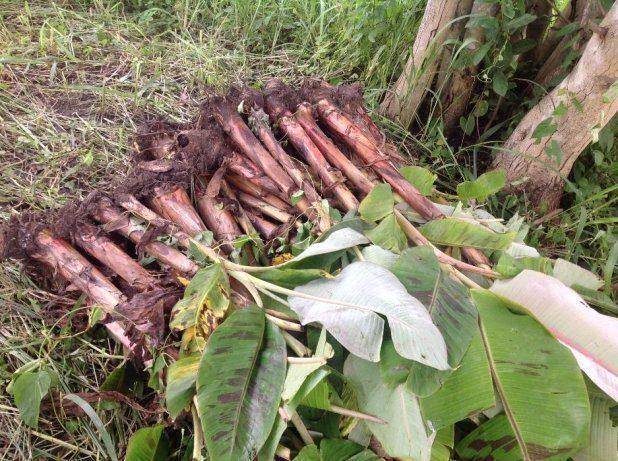
Suckers | Plantain | Banana| Pineapple (PROMO)
V-X2BZK (0 reviews)
We supply suckers that were bred from high-performing sucker-producing parent plants and they are reputed for rapid growth, early fruiting, and high yield potential.
We sell in large quantities and we will be able to supply as much as you demand.
Product ID: 3620
Availability:
In Stock
Brand: UNCATEGORIZED
Category: UNCATEGORIZED
₦ 180
Buy this product to earn upto 18,000 Cashback Points
Share product:
Suckers | Plantain | Banana| Pineapple (PROMO)
V-X2BZK (0 reviews)
We supply suckers that were bred from high-performing sucker-producing parent plants and they are reputed for rapid growth, early fruiting, and high yield potential.
We sell in large quantities and we will be able to supply as much as you demand.
Product ID: 3620
Availability:
In Stock
Brand: UNCATEGORIZED
Category: UNCATEGORIZED
₦ 180
Buy this product to earn upto 18,000 Cashback Points
Share product:
Product Description
Plant Suckers
We have suckers for sale. A sucker is a plant growth that develops from the rootstock of a plant that has undergone grafting.
- A sucker grows from the base of the root of the plant at a certain distance away from the plant.
- This undesirable part of the plant should be removed to prevent it from sucking away the plant’s energy.
- Rooted sucker can be dug up and planted elsewhere.
Plants that produce Suckers.
- Blackberries and raspberries boast an impressive list of about 250 species, all of which reproduce via sucker.
- Other types of fruit that produce root suckers are apple trees, blueberries, cherry trees, plantain, plums, pears, pineapple, and banana.
- In addition, several species of trees such as locust (Robinia) and elms (Ulmus) have aggressive roots that can spread via sucker.
- Other trees that reproduce using root sucker are Tree of Heaven (Ailanthus altissima), chaste tree (Vitex agnus-castus), cottonwood poplar (Populus sp.), western redbud (Cercis occidentalis) and tallow tree (Sapium sebiferum).
Banana Suckers.
- Both wild species of bananas and cultivated bananas produce suckers.
- The clump of plants formed by the parent plant and its suckers is commonly called a mat. The botanical term for a mat is genet, and for a sucker is ramet.
- Banana plants (Musa spp.), with sweet, nutritious fruit and attractive foliage, have many uses in the kitchen and home landscape.
- They come in three different types, but only sword suckers, or those with a well-developed root system, grow into thriving banana plants.
- Maturity generally ranges from 15 to 24 months.
Pineapple Suckers.
A pineapple plant flowers only once and produces one pineapple. Then it dies. But before it dies it also produces offspring.
- A sucker is a little plantlet that grows between the leaves of the mature pineapple.
- Some varieties will produce more suckers than others, some will start earlier and others later.
- But they all produce at least a few suckers or pups before they die.
- If you leave the suckers in place you get what is called a "ratoon crop".
- How to take off suckers from pineapple plants: Grab them as close to the base as possible, and twist and pull at the same time. They usually come off easily.
- And then plant them like you plant pineapple tops. Just stick them in the ground and they'll grow.
- Variety name: Smooth Cayenne.
- Maturity period is 18 months.
Plantain sucker
- Farmers traditionally depend on the natural regeneration process of new plantain suckers to replace their plantain plants.
- They often remove all on a mat, except for the ones selected to replace the mother plant.
- However, with the advent of technology and other sophisticated techniques, planting and harvesting plantain sucker require fewer inputs and can be planted immediately on the field.
- Generally, plantain requires 10 to 12 months from planting to harvest.
Warnings!!!
- Do not plant a sucker affected by any type of disease or pest problem.
Feature
Shipping Information
Local Pick-Up: 2 - 4 days
Office Pick-Up: 3 days



